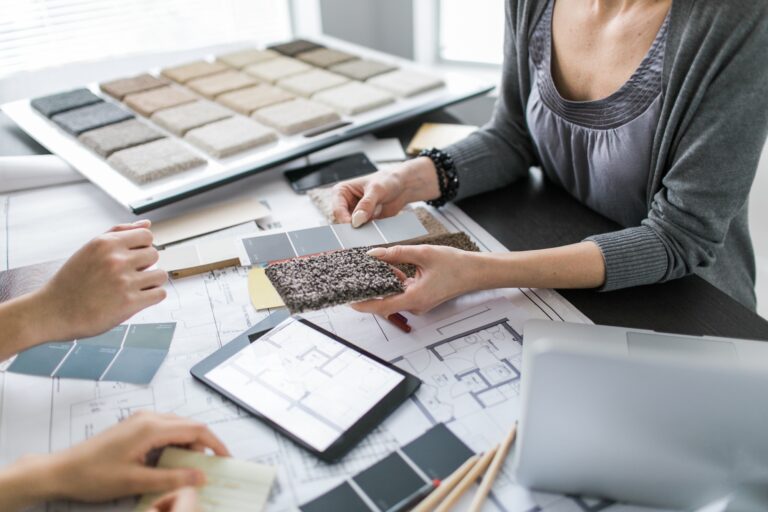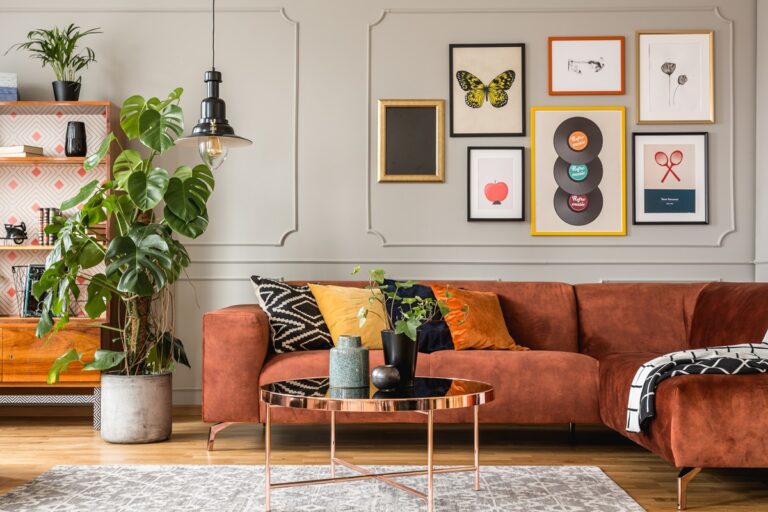Building a successful interior design business takes more than just a great eye for style. Whether you’re running the show solo or leading a team, having the right structure in place makes every project smoother.
Some designers thrive as one-person teams, while others bring in assistants, technical designers, and procurement specialists to keep things running seamlessly.
In this blog, we’ll explore the different ways you can structure your interior design team.
From key roles like lead designers and project managers to the tools that keep collaboration efficient, we’ll show you how to create a team that fits your business and design style.
Table of Contents
The solo interior design team
Being a solo interior designer means wearing many hats. From meeting with clients to creating design boards, sourcing products, and managing invoices, every detail is in your hands. It’s a lot to juggle, but the freedom to make decisions and shape your design style is part of the appeal. Tools like DesignFiles help streamline the process by keeping mood boards, sourcing, invoicing, and client communication in one place. While working solo offers creative control and flexibility, balancing design work with day-to-day tasks can be a challenge. Staying organized is key to keeping both your projects and your sanity on track.
A solo designer’s responsibilities include:
- Client communication
- Creating design presentations
- Sourcing products
- Managing invoices
- Overseeing project timelines
- Handling feedback and revisions
- Marketing and promoting services
Expanding your interior design team
Growing your interior design team is an exciting step that allows you to take on more clients and tackle larger projects. Knowing when to expand depends on your workload and business goals. If you’re juggling too many tasks or turning down projects, it might be time to bring in extra hands. Adding team members can help you focus on design while others handle the details that keep everything running smoothly.
Here are some key roles that support design work and improve efficiency:
Lead designer (or principal designer):
- Oversees design vision and client relationships
- Responsible for final design approval and client satisfaction
Design assistant:
- Supports the lead designer with sourcing, product research, and scheduling
- Helps with administrative tasks like invoices and client follow-ups
Technical designer:
CAD designer:
- Creates detailed floor plans and technical drawings using CAD software
- Enhances client presentations with realistic imagery
Project manager:
- Coordinates contractors, deliveries, and installation schedules
- Ensures projects stay on time and within budget
Marketing and client services:
- Handles social media, email marketing, and new client inquiries
- Uses software to setup automated lead nurturing campaigns
Bookkeeper:
- Makes sure that client invoices are paid synched with QuickBooks (Tip: DesignFiles integrates with QuickBooks)
- Ensuring that employees are paid, all expenses are tracked, and that projects are reconciled at the end
Interior design team structure and hierarchy
Every interior design team has its own unique structure, but most follow a standard hierarchy that keeps projects running smoothly. In small teams, the lead designer often takes on multiple roles, while larger firms have dedicated specialists for each task.
Collaboration is key. Designers, assistants, and project managers work closely to bring each space to life. The structure can vary depending on the size and focus of the business, but it’s still important to understand the typical hierarchy. This can clarify reporting lines and how each role contributes to the design process.
A standard interior design team hierarchy might be:
- CEO or firm owner (oversees business operations and growth)
- Lead designer or principal designer (leads design vision and client relationships)
- Design manager (oversees design team and project workflow)
- Project manager (coordinates schedules, contractors, and budgets)
- CAD designer (creates technical drawings and floor plans)
- Rendering specialist (produces 3D visuals and design presentations)
- Design assistant (supports lead designer with sourcing and admin tasks)
- Junior designer (assists with design development and client communication)
In DesignFiles, you can set up billable versus non-billable time and add certain rates for different team members.
Independent contractors vs. employees
When growing your interior design team, deciding between hiring full-time employees or working with independent contractors depends on your business needs. Full-time employees are a great choice if you need consistent support for daily tasks like client communication, sourcing, and design assistance. They help maintain a steady workflow and bring long-term stability to your team.
Independent contractors are ideal for specialized tasks or short-term projects. CAD design, rendering, and specialty trades—like custom carpentry or lighting design—are often outsourced since these roles may not be needed for every project. Contractors offer flexibility, allowing you to scale your team up or down as needed without the commitment of a full-time hire.
Both options have their benefits. Employees provide reliable support and a sense of continuity, while contractors offer expertise and cost-effective solutions for specific tasks. Finding the right balance ensures you have the skills and support needed to deliver stunning designs without overextending your budget.
Streamlining collaboration with design software
The right design software makes it easy for your team to collaborate and stay organized. Platforms like DesignFiles bring everything together, so everyone can access design boards, source products, and track client feedback in one place. With real-time notifications, your team knows when a client leaves comments, approves items, or submits a questionnaire, helping everyone stay aligned on tasks and deadlines. This level of coordination saves time and keeps projects moving forward without endless email chains or missed updates.
When choosing design software, look for features like:
- Collaborative design boards with product clipping tools
- Centralized client communication and feedback tracking
- Real-time notifications for team updates and client approvals
- Built-in invoicing and purchase order management
- Simple tools for creating branded presentations and tear sheets
It’s so important for the principal designer to set up their team with a good system, so everyone can be on the same page. With DesignFiles, you can assign team members tasks and subtasks, tag them, and add due dates and priorities. Plus, designers can be assigned to the appropriate projects, so they don’t get slammed with notifications.
Whether you’re solo or leading a crew, DesignFiles keeps everything running smoothly. Explore our tools and start your free trial.


